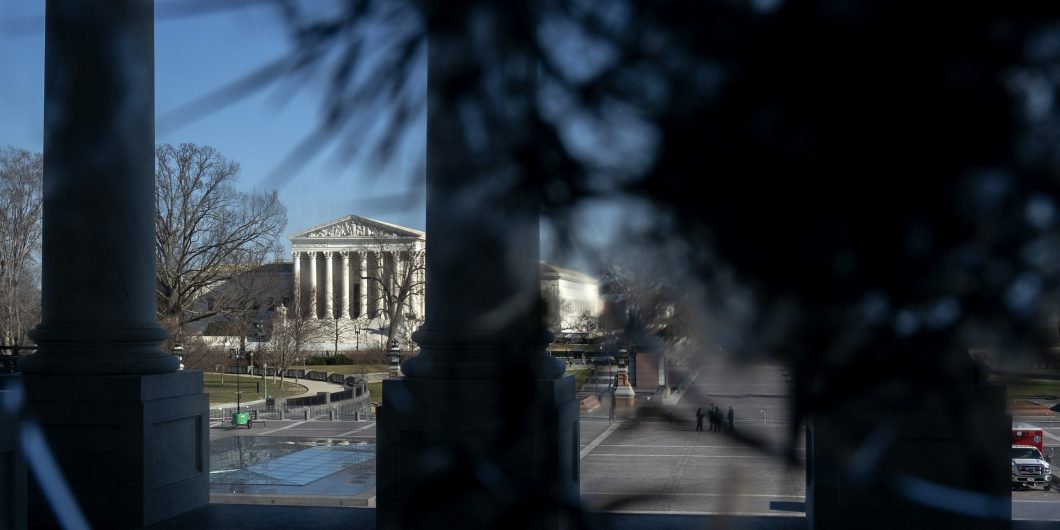Daniel Klein and Michael Munger are right to worry about tyranny. But reforming the system that oligarchic tyrants control is a fool's errand.
The Circus is Coming for the Courts
Moments before rioters broke into the Capitol last week, Sen. Ted Cruz told his colleagues on the Senate floor that a unified vote to reject electoral votes would “astonish the viewers.”
Rarely are our elected officials so honest about their motivations, but long before the “monstrous tragicomic scene” at the Capitol (to use Burke’s words), it had become evident that two of the federal government’s three branches had devolved to little more than a circus show. Floor debate, confirmation hearings, Rose Garden speeches, and daily press briefings are nothing more than performance art designed to “astonish” a narrow, usually partisan audience. Social media and cable talking-heads have made the elected institutions into megaphones to be used to demonstrate the right set of loyalties, pick the right fights, and effectively feign the right kind of outrage.
This is what Cruz and the other Trump loyalists were doing on January 6, and we saw just how real and dangerous the consequences of such theater can be.
The third branch has, to be sure, had its problems over the last several decades. But the judiciary has largely avoided the particular corruption of the other two branches. Off the cameras, away from social media, and tasked with answering questions that mostly bore and baffle the average citizen, judges and justices are the only members of the federal government whose primary role continues to require serious, high-level thought.
Moreover, post-election litigation vindicated the judiciary spectacularly. For months, the Left boldly and incessantly predicted that the voters would reject Trump, but that the president would stir up frivolous litigation to toss out votes and steal the election. His hand-picked judges and justices, which have been the crowning achievement of his presidency, would loyally back their patron and put an end to American self-government.
Trump has, of course, exceeded expectations when it comes to his part in this dystopian fantasy. But the courts didn’t blink an eye, upholding the law and proving that conservative jurisprudence—unlike much conservative campaign rhetoric—is not mere partisan hackery.
This ongoing episode, however, should be a warning that the particular brand of dysfunction afflicting the other branches of government is on its way to the judiciary.
The Left has already been trying to force the Court into the games played by our politicians by suggesting the possibility of court packing, even writing partisan threats into an amicus brief in 2019. The election litigation shows that the Right is more than happy to drag the courts down, too.
The briefs and affidavits filed by Trump allies in the judicial fight were precisely the kind of empty performances that have degraded the other two branches. They were never intended to make real legal arguments (just like no Senate confirmation hearing really seeks to assess the relevant qualifications of a nominee). Rather, they were designed to communicate messages to a political audience in the hope of controlling the narrative surrounding the election results. As such, they used fantastically flawed statistical projections, data that came from the wrong state, and flatly made-up claims about dead or ineligible voters. One Wisconsin suit even attempted to have a summons issued against the Electoral College. The people bringing these cases probably knew no court would take such claims seriously, but the court was not their actual audience. Several weeks before his speech in the Senate, Cruz offered to “astonish the viewers” by arguing Texas v. Pennsylvania at the Supreme Court. Had arguments ever taken place, they would have showcased his political, not his legal, expertise.
As many GOP figures voice more blatantly partisan expectations of federal judges, it is only a matter of time until such expectations begin to show themselves in electoral promises.
As a sign that the Supreme Court is being integrated into the harebrained narratives that drive the rest of our politics, the conspiracy theories started flying after it declined to hear a suit by Texas challenging Pennsylvania’s electoral procedures. Even though the justices have not been working in the Supreme Court building for months, reliable Twitter sources claimed that Chief Justice John Roberts was “overheard” in conference bullying justices into submission. Roberts also plotted with Justice Breyer over the phone about how to bring down Trump. And of course, he also vacationed on Epstein’s island. No serious person believes these stories, but unserious people—and those who would manipulate them—are not without considerable influence in our politics. Pundits and public figures on the Right are already presenting the Court as a compromised entity, even if they stop short of the most fanciful stories, and Trump blasted the justices for their disloyalty at the D.C. rally.
In an age of demagoguery, judges and justices who do their job by neutrally applying the law are perfect targets. This is a highly educated and credentialed elite whose job is to engage in often-technical questions that most people do not understand. Such a group perfectly fits the needs of the populist impulses that now dominate the GOP. Obscure procedural rules like standing or laches can easily be presented as mere technicalities—excuses used to cover up corruption. Judges can thereby be presented as part of the swamp’s elite, willing to use their power either to pursue their own agendas, or simply to prevent the deplorables from disrupting their comfortable status quo. Presenting the courts in this way serves both to create a foil for the people’s tribunes, and to undermine public trust in the rule of law, always a formidable barrier to the ambitions of designing men.
Looking ahead, another (otherwise innocuous) innovation of the Trump years may serve to further this trend. In 2016, as many conservatives worried that a reality show host would be over his head appointing judges, then-candidate Trump released a curated list of potential Supreme Court nominees with the help of the Federalist Society. This tactic has been widely praised on the Right, even by some who are critical of Trump on many other issues. The use of the list offered an additional layer of oversight and refinement of judicial selection, and it served to clarify the judicial consequences of elections. Given the regularity with which Republican nominees to the Court had drifted leftward, a degree of outsourcing to a group devoted to originalist and textualist jurisprudence was a smart move.
But if, as seems likely, Republican candidates will make such lists a firmly established expectation, they may create perverse incentives both for judges and presidents in the future. The use of these lists makes the nomination choice a more public matter. This was good when it allowed a group like the Federalist Society, an association genuinely interested in the promotion of a healthy jurisprudence, to help guide the choice of a political amateur. But the continued influence of such organizations cannot be taken for granted. As many GOP figures voice more blatantly partisan expectations of federal judges, it is only a matter of time until such expectations begin to show themselves in electoral promises. In fact, the last iteration of Trump’s Supreme Court list already included loyal partisan brawlers like Sens. Cruz and Tom Cotton.
Reliance on an established association of elites is no longer the modus operandi of the Republican Party. And after all, Federalist Society judges just betrayed President Trump. Given how many seem willing to use the judicial branch for the most outrageous of political objectives, the use of the campaign list might be the most prominent of the many possible avenues for bringing the courts fully into the maelstrom of our unhinged politics. What could go over better in a GOP primary than a promise to nominate a proven culture warrior to the bench?
And lest one hope that the Capitol violence would serve to jolt a sense of dignity and duty back into public servants, 147 Republicans still opted to use their votes to feed electoral conspiracy theories after order was restored. As long as it works, the trend will continue.
The courts are several degrees removed from these blustery political winds, and they just proved the Left’s dire predictions of coup-by-judiciary to be utterly ungrounded. But they are not entirely isolated. So while it seems unlikely that we’ll see Lin Wood-style screeds reflected in judicial opinions any time soon, the 2020-21 election fiasco should be a warning: the circus is coming to town.



